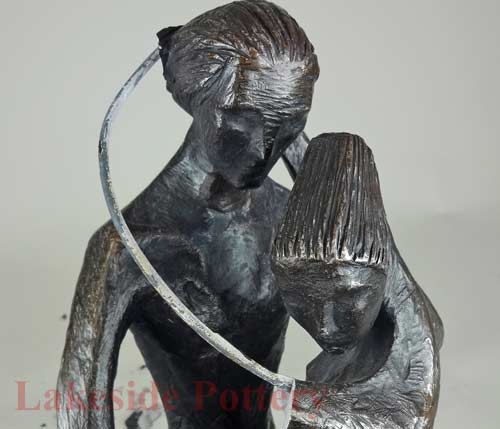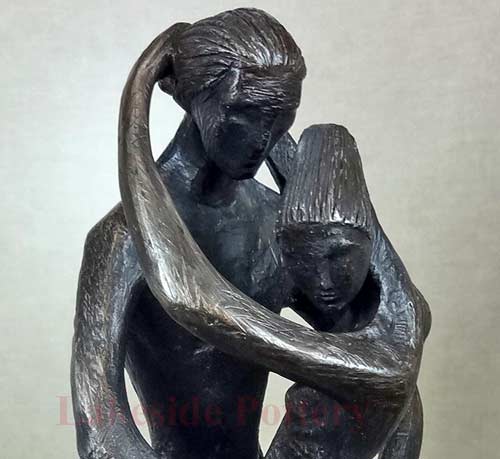|
When to Fix Metal Sculptures
The first question sculpture owners often ask is: "Should I bother to fix this?" To answer this question, it is helpful to research the artist, date and provenance of the sculpture as well as the materials used.
Is My Sculpture Valuable?
Research as much information on the sculpture and the artist before considering repairing your sculpture. The sculpture’s value is determined by the artist, who made the piece, was it cast posthumously and who owned it. Then find out what metal was used to make the sculpture. Most metal sculptures that come to us are made of Bronze or Spelter.
Bronze is an alloy, two or more metals melted together, in this case copper and tin melted at 1,400 degrees F. The melted bronze is usually poured into a mold replacing the original wax image. Bronze is very heavy and when tapped with something hard it makes a ringing sound. Bronze is extremely hard and therefore unlikely to display any damage other than to the surface patina; it was first used as swords in the Bronze Age.
Spelter is a lower value metal also known as white metal or pot metal. It contains zinc and lead, it is lighter than Bronze, it is softer, brittle and corrodes easier than Bronze.
Resin: Sometimes we receive “Bronze” looking sculpture which was made out of Resin which is epoxy resin and bronze powder blended before casting. After cast is removed, patina is applied the metallic looking surface. The piece is then rubbed back to highlight features and polished with wax.
Many customers believe their sculpture is Bronze and are disappointed when they find out their sculpture is made of Spelter or Resin. To find out what is your sculpture made of, see tests below.

Bronze / Resin statue with missing arm |

Bronze / Resin statue Restored |
Test one: You can conduct a simple test, before you contact us or other restorers, by scratching off the patina on the underside of the sculpture’s base with a harder metal. If the scratch reveals a copper / gold / yellow color it is bronze. If it is silvery gray color, it is Spelter. If it scratch easily and feels like plastic, it is resin.
Test Two: Lift the item in your hand. Bronzes are extremely heavy. Spelter and resin are both comparatively light, but they are sometimes attached to heavy wood or stone bases to give them extra weight. Turn the item upside down and determine if it feels top heavy. If it does, it is most likely Spelter or Resin and not an authentic Bronze.
What Repair Type Should I Choose? Welding or Adhesive?
With high value sculpture, one might consider museum-quality repairs (reversible repair) as compared to welding. It is an important decision because restoration of metal sculptures using welding or brazing, that generate intensive heat, damages relatively large areas of the original patina requiring repainting / antiquing covering a much greater surface than the break area. Welding is not a “reversible” repair which museums prefer not to see. The preferred method of high value sculpture repair is using metal pins and adhesives.
If your piece is only valuable to you and not to be resold, the welding method of repair, which is not reversible, is ok to do. Welding is a stronger and sturdier repair if compared with adhesives, although new and modern adhesives are pretty amazing when used properly. If one of our customers owned a sculpture worth $20,000, we would not want to see or recommend a restoration using the welding process.
Where Can My Sculpture be Fixed and What is The Repair Cost?
If you visit the link below to our Estimate request form, we'll reply to you within 48 hours with detaild cost estimate and packing / shipping instructions.
Repair Estimate On-line Form
Care and Maintenance
Keep metal sculptures away from moisture. Avoid placing it in an area where it is susceptible to rain or in a damp basement or garage - they will corrode. Aging patina is desirable; do not rub off the patina or aged brass to regain the shine, it will reduce the item’s value substantially. Do not use metal cleaners or abrasives that will take the patina off. To clean, dust the sculpture with a terry cloth towel.
|